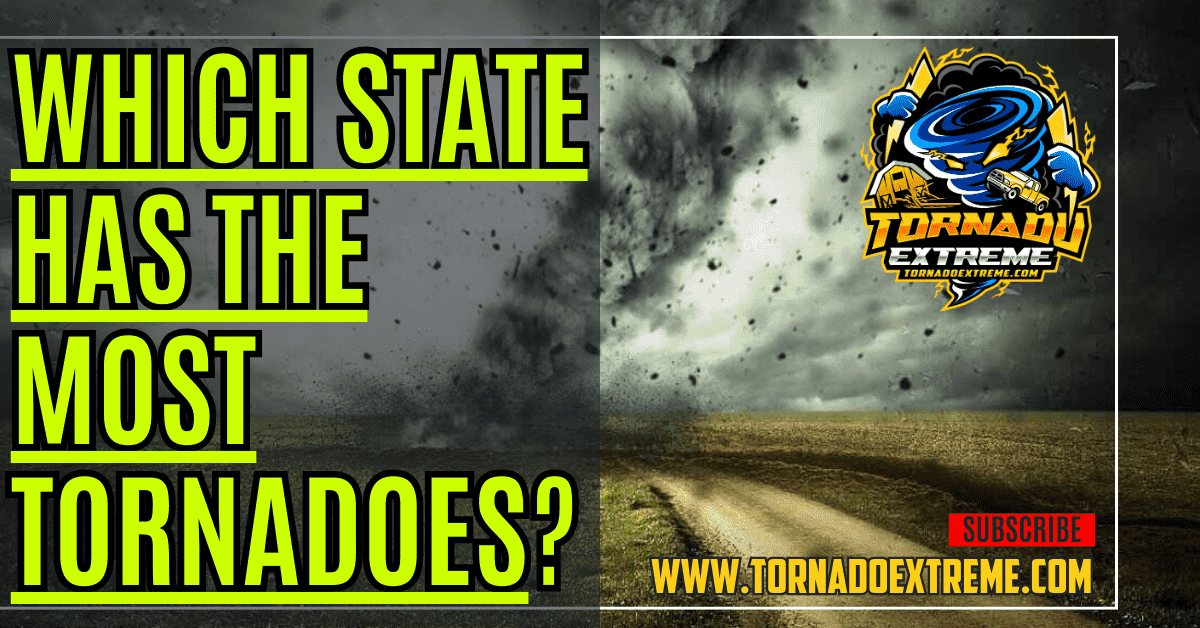Introduction – Which State Has the Most Tornadoes?
Texas is the state with the most tornadoes in the United States on average each year. The severe weather conditions in Texas make this number possible, but it also highlights why it’s so important to have a good idea of which states are most likely to be affected by these natural disasters. Knowing which ones are will be crucial for future disaster preparedness and response efforts to help mitigate any loss of life and property that could occur.
After Texas, Kansas and Oklahoma take up spots two and three on the list. On average, Kansas sees around 87 tornadoes per year while its neighbor Oklahoma gets hit with an average of 61 — still a lot, but not quite as much as Texas. Florida takes up spot four, seeing 53 tornadoes per year on average. Illinois comes in at five with an approximate 52 tornadoes annually. Even though there is such a large gap between one and five, it does show how widespread the threat is across all states.
Unveiling the Fury of Nature: Tornadoes by State
When we look at numbers alone, Texas is at the top of the list when it comes to states frequently being hit by tornados each year with an average number of about 120. After Texas comes Kansas with about 87 every year and then Oklahoma with about 61 every year.
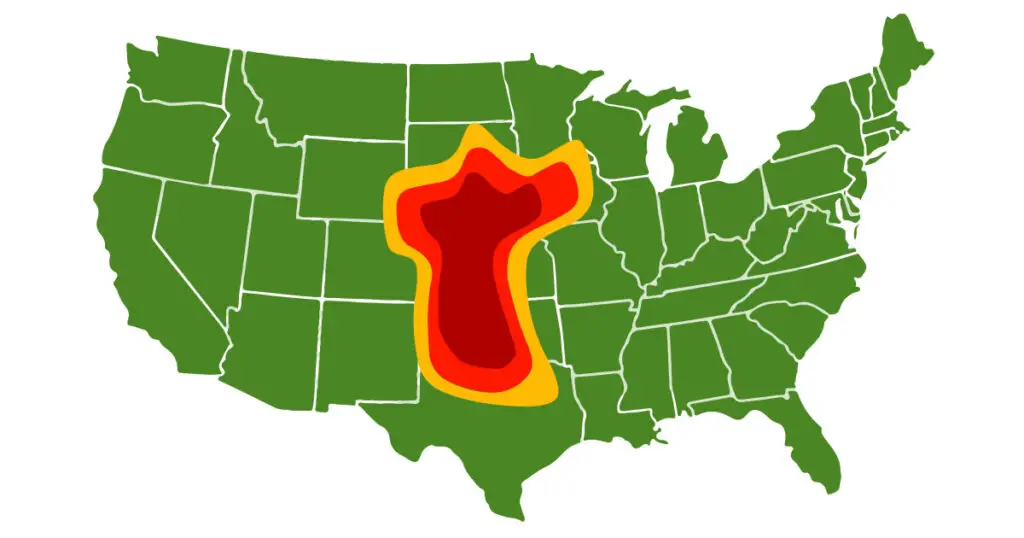
Understanding Tornadoes
According to data from the National Weather Service (NWS), there are around 1,253 tornadoes reported across America in an average year. Midwestern states like Nebraska, Iowa and Arkansas all fall within what’s commonly known as “Tornado Alley,” which is a region located in Great Plains where tornados are most common to form.
The most recent data available shows that Nebraska had about 52 tornadoes every year since NWS started compiling information back in 1953 while Iowa saw about 53 during that same timeframe. Arkansas, which is the state with the most tornadoes per square mile on average (0.30), saw a little more than 16,000 from 1995 to 2018.
In fact, the Gulf Coast region saw about 1,378 tornadoes in 2023 alone. To put that into perspective, an average annual tornado in America can reach speeds up to about 200 mph — making them not only dangerous but also destructive.
The year before, there were tornados reported across the U.S. in places like Rhode Island and District of Columbia where you wouldn’t expect them to be happening. However, there were also tornados reported in South Dakota and North Carolina — both states are well-known for having severe weather conditions.
What Causes a Tornado?
Creating the perfect storm for a twister involves a few meteorological processes clashing together at just the right time. In order for severe thunderstorms to occur—under which tornados can form—you need warm moist air and cool dry air to collide together.
While it is less likely for these specific conditions to occur in locations like Rhode Island or D.C., it doesn’t mean they aren’t possible. For example, in information collected by NWS back in 2022, there were at least two tornados spotted near Newport County Airport on Oct. 27 and one spotted near Battle Street Park on Nov. 27. Both areas are located within the smallest state in our country.
Tornado Alley: Myth or Reality?
Yes! The idea of Tornado Alley is more reality than myth when you look at data over time compiled by agencies like NWS. It’s often dubbed as “a nickname invented by media” but it’s really just used to describe a general area where we see some of our most intense and frequent tornado developments across states including Texas, Oklahoma and Kansas.
And this nickname isn’t just thrown around willy-nilly either. When you compare the number of tornadoes that are reported across states and scales that rate intensity, there is no choice but to agree with meteorologist.
Tornado Alley is a term often used to describe the region where tornadoes most frequently form in the United States. It stretches from Texas and Oklahoma up through Kansas, Nebraska and into the Dakotas. But it’s important to remember that tornadoes are not exclusive to this area, they can happen anywhere.
See Also: What Is a Multi Vortex Tornado? A Comprehensive Exploration
The Criteria for Measuring Tornado Activity
Intensity and frequency are key metrics for measuring tornado activity. Understanding these factors helps in predicting potential tornado outbreaks and preparing for their impact.
Intensity and Frequency: How Are They Measured?
When measuring tornado activity, two of the biggest factors taken into consideration are intensity and frequency. Intensity refers to how strong a tornado is on a scale of 1-5. The more intense the storm, the higher it ranks on what’s known as the enhanced Fujita scale. Frequency is exactly what you think it means – how often do we see these storms occur?
Advanced warning systems have played a pivotal role in predicting when and where a tornado will strike before it even forms. The United States is by far the most tornado-prone country in the world, seeing an average of 1,000 of them each year.
While states like Oklahoma, Texas and Kansas experience some of the highest numbers in Tornado Alley, other states have also seen their fair share. Illinois for example has had several outbreaks over recent years causing extensive damage across parts of Chicago.
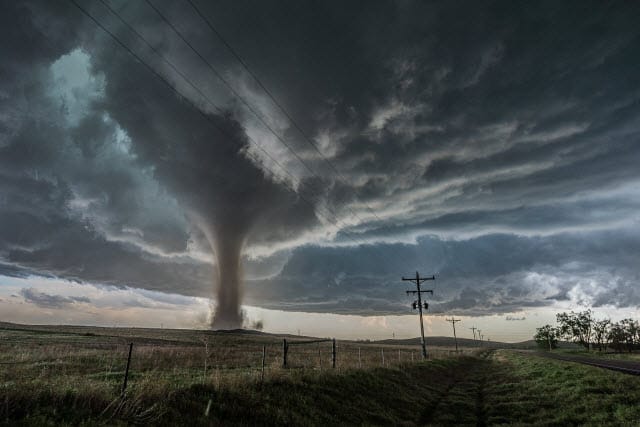
The Role of Forecasting and Advanced Warning Systems
The US is one of the countries with the most tornadoes, as there are about 1,000 every year. Tornado alley states like Oklahoma, Kansas and Texas are especially prone to them but there are several states outside this region that also experience them. Illinois has a high number of tornadoes per year and they’re mostly in the eastern part of the state. They typically occur in spring and summer with May and June having the most tornadoes. Unfortunately powerful tornados in cities often cause hundreds of deaths each year which makes them more deadly than those in other countries. With all this being said though, advanced warning systems such as accurate forecasting can save lives.
It’s important to have forecasting and advanced warning systems when it comes to being prepared for a tornado. By using radar technology along with analysis from meteorologists, forecasters can predict if a tornado will form so they can give warnings to affected areas.
These tools have gotten way better over time which has led to less people dying from tornados. In providing enough time before a dangerous tornado hits an area gives people a chance to take precautions needed to protect themselves and their property.
The Epicenters of Tornadoes in the United States
Tornadoes strike the central United States, particularly Texas, Kansas, and Oklahoma more than anywhere else. With Texas leading at 120 a year, the data they’ve collected is crucial to our understanding of when and why they happen.
States at the Heart of Tornado Alley
Texas, Kansas and Oklahoma are all in the middle of what’s called Tornado Alley. This region faces the most tornado activity because of its weather patterns and geographical features. So far this year there have been 13 confirmed tornadoes across the area, according to the National Weather Service Storm Prediction Center.
Texas: Champion of Tornado Counts
There were 54 reported tornadoes in Texas in an average year between 1991 and 2015, making it No. 1 in total number of tornadoes per state during that time period. It’s capable weather conditions alone make it a focus point for researchers studying these highly destructive natural disasters.
Oklahoma and Kansas: Runner-ups
Oklahoma averaged about 33 tornadoes annually from 1991 to 2015, second only to Texas’ 54. And Kansas was ranked third with about 30 each year during those two-and-a-half decades.
See Also: How Fast Do Tornadoes Spin? Wind Speed and Severe Weather
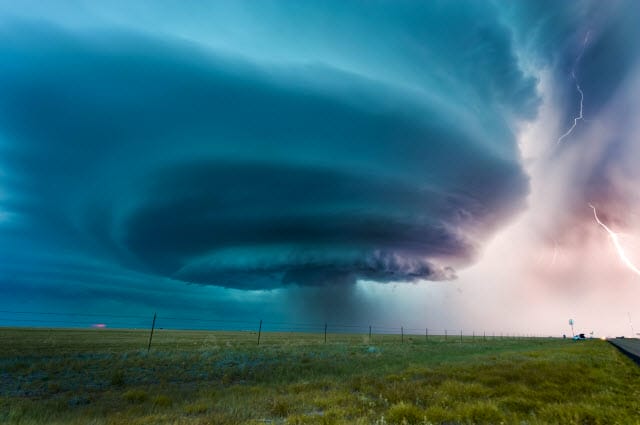
Beyond Tornado Alley: States Facing Frequent Tornado Threats
Alabama and Mississippi fall within “Dixie Alley,” another zone prone to severe storms. Large parts of Illinois are also consistently hit by many strong twisters each year.
Alabama and Mississippi: The Southern Tornado Hotspots
Named the southern tornado hotspots, Alabama and Mississippi. These states are located in the southeastern region of the United States. Their location also puts them near to the Gulf of Mexico which blows moist air into these areas. The presence of this moist air is a critical factor in the creation of severe thunderstorms and twisters such as tornadoes. Further adding to their high activity is the flat terrain and collision of warm and cool air masses.
Peoples lives have been impacted by these catastrophic events. They’ve caused substantial property damage in both states, but even worse they’ve claimed innocent lives. In these areas, it’s safe to say that effective safety measures and preparedness strategies are very important.
The Emerging Tornado Zones: Florida and Illinois
National Weather Service officials say that Florida and Illinois are turning into some of the biggest tornado zones, with increased activity being reported in these states. But why? Well, Florida is at risk for tropical storms and hurricanes which makes it a hotspot for tornadoes. On the other hand, Illinois just happens to be right where bad weather loves to brew up.
These states have always been known for something else but now they’re highlighting a whole new aspect of them. This eye opening discovery just goes to show how America’s own personal tornado alley is changing before our eyes. All this newfound wind activity also raises concerns for those who live there too. I mean come on, when you think about tornadoes, you don’t exactly picture Florida or Chicago. But now we need to start doing so if we want people in these areas to stay safe.
The Impact of Tornadoes on Life and Property
Tornadoes are one of nature’s most powerful events, leaving a significant impact on life and property. They can destroy buildings, flip cars, and uproot trees in seconds. The aftermath of a tornado can result in communities facing long periods of recovery and rebuilding. Understanding the effects of tornadoes is crucial for preparedness and response strategies to minimize their destructive potential.
The number one problem with tornadoes? They’re people killers.
One minute you’re hanging out, living your life cause Mother Nature is mad at something again and the next you know you’re flat on your back wondering what happened. There are people who are more vulnerable than others when it comes to tornadoes. Those poor guys who live in mobile homes definitely got hit the hardest when compared to other homes because they aren’t built as strong. Even though many have tried to make them stronger over the years, they still don’t stack up against anything a tornado brings with it.
People who survive a violent whirlwind like that usually end up needing some help themselves before things get better. Their pain runs deep too, ya know? So even if they were lucky enough to stay alive though all that craziness, they’ll probably deal with some physical issues for a while because of what went down.
Losing their home is just plain awful if you ask me but imagine losing loved ones too… Talk about trauma! These folks will need all the support anyone can give them so passing by on your bike isn’t going to cut it this time.
Community emergency services and relief organizations play an essential role in helping these survivors pick up their broken hearts and carry forward.
Money makes the world go ‘round
I bet you knew what I was going to say next. The economy might not always be on our side but we still gotta work with what little we’ve got. And a tornado is definitely something we don’t want to mess with in that department.
Homes, businesses and the infrastructure that keeps us going can all get wiped out so easily when a tornado pops up. Like I said before, rebuilding from what’s left will take years and put serious strain on local and government budgets.
Small towns are hit especially hard because they’ll need as much help as they can get but sometimes still may not be able to rebuild for years.
Homeowners Insurance: Does It Cover Tornado Damage?
If you’ve got it, this is your time to shine. Homeowners insurance was created for moments just like this one. When something terrible happens and there isn’t anything you could have done to prevent it.
I’m no insurance agent but I’m sure they’d tell you to at least review your policy if you’re in an area known for tornadoes too. You never know what little rules they might try throwin’ back in your face when you file that claim if you haven’t read the fine print on them yet.
Once everything is all said and done, insurance companies will check out what’s left of everything before funding however many repairs or replacements are needed.
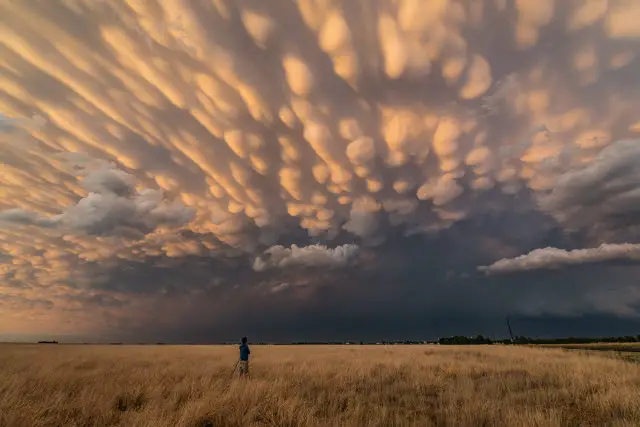
Historical Perspectives and Record-Setting Tornadoes
We’ve had some bad news storms pass through over the years so let’s learn from them already! Taking note of events that ended badly always helps scientists better prepare us for when nature gets mad again. These researchers really know their stuff nowadays though after all these years of studying how tornadoes behave.
Even though we try to stay ahead as much as possible things can still blow up in our faces (literally) when one comes barreling down right at us. But looking at these past experiences should prove we’ve come a long way since then on our safety measures.
The Most Destructive Tornadoes in US History
There’s been three big guys who were total jerks when they rolled into town: the Tri-State Tornado of 1925, the 1936 Tupelo and the 1947 Woodward. They all took their toll on many things but it was the loss of life that really got to people in the end.
The Tri-State Tornado specifically can be considered one of America’s worst natural disasters ever recorded because of how far it traveled and how long it lasted.
It all started in Missouri before ending in Indiana. This bad boy left a huge path of destruction behind itself as it wrecked everything up ahead too.
Other tornadoes may not have been as powerful as this one but they still managed to tear apart entire cities and kill hundreds if not thousands of people with them.
Thanks to these monsters though we know when enough is enough. There really isn’t much more we can do than what we’re already doing when it comes to preventing tornado-related deaths so let’s just hope they stay away from us.
The Tri-State Tornado of 1925: An Unparalleled Disaster
The Tri-State Tornado of 1925 holds the title of the deadliest in U.S. history, with nearly 700 lives lost and thousands injured. It leveled entire towns along its path, leaving behind a trail of destruction that stretched for hundreds of miles.
This devastating event showcased the need for better warning systems and building practices in tornado-prone areas. In response to the tragedy, scientists and engineers have made significant advancements in tornado science and safety measures over the years, which have saved countless lives.
The Devastating Impact of the 1936 Tupelo and 1947 Woodward Tornadoes
Other tornadoes throughout history have also left their mark on communities across the country. Two of the deadliest include the 1936 Tupelo Tornado in Mississippi and the 1947 Woodward Tornado in Oklahoma.
The Tupelo Tornado killed more than 200 people and destroyed most of downtown Tupelo when it ripped through the city on April 5, 1936. The Woodward Tornado killed about 185 people on April 9, 1947 — one of many terrible twisters that hit Oklahoma that day.
Both events emphasized the need for improved preparedness – from better warning systems to safer building materials – to protect people from these powerful storms.
Tornadoes are an unfortunate reality for millions of Americans who live or work in parts of “Tornado Alley” — an area stretching from Texas to Nebraska — or other highly prone regions like Dixie Alley (Southeast) or Hoosier Alley (Indiana).
See Also: What is a Waterspout Tornado?
Preparing for the Inevitable: Tornado Safety and Readiness
The National Weather Service says education is key to saving lives before, during and after a tornado.
Before a tornado: Understand your risk level by finding out if you live or work in an area prone to tornadoes. If so, make sure you know what your community’s warning system sounds like and how you will be alerted if a twister is coming your way.
During a tornado: Know where you can take shelter at home (usually an interior room without windows on the first floor or in the basement) and at work (often an interior hallway or bathroom on the lowest level). Practice these drills with your family, friends and colleagues so that everyone knows exactly what to do.
After a tornado: Wait for the all-clear from local authorities before leaving your shelter. Once it is safe to venture outside, steer clear of downed power lines and report them to the appropriate utility company. Use extreme caution when inspecting damage to your property, as unstable structures could collapse without warning.
National Tornado Preparedness Week runs through March 6 this year, but don’t limit these tips and best practices to just one week of the year. Make sure you know how to protect yourself and others from a tornado every day.
New technologies and methods are being developed to improve tornado prediction accuracy and the understanding of what causes them. This research is a critical part of developing better tornado response strategies in communities.
Safeguarding Homes and Families: Pre-Tornado Preparations
Pre-tornado procedures encompass securing homes and making sure families have a plan. This includes discovering a safe room or storm shelter, anchoring heavy furniture, and creating an emergency kit with necessary supplies. If these steps are taken, families can significantly shrink the chances of injury and property damage during a tornado.
It’s also important for families to practice tornado drills and understand the warning signs of an approaching storm. Knowing what to do and where to go can be the difference between safety and doom. Community education programs are offered to help residents prepare for tornado season.
Post-Tornado Recovery: Steps to Rebuild and Heal
Recovering after a tornado is hard work. It requires assessing damage, making repairs, and addressing emotional distress promptly. Local and federal agencies provide support along with community solidarity which plays a major role in recovery.
Steps to rebuild involve accessing financial aid firstly, then seeking emotional support secondly, lastly rebuilding stronger more resilient structures comes thirdly. Community effort is crucial in overcoming devastation caused by tornadoes. Together as one we can heal with time but time will make us stronger from this experience we’ve been through together
Innovations and Advancements in Tornado Research
Improved models and warning systems have made predicting and tracking these storms faster and more accurate. The sooner people know about a possible tornado, the earlier they can take shelter from it. This has brought down the number of injuries and deaths caused by them.
The Frontier of Tornado Forecasting
Better technology for predicting tornadoes helps save lives during severe weather events. Upgraded radar systems give meteorologists updated information on how dangerous an incoming storm could be. Social media apps also help get warnings out to as many people as possible so they have time to find safety.
The integration of technology like this into tornado research improves response strategy effectiveness. It’s all part of an ongoing effort to protect human life better whenever one of these monster storms pops up somewhere.
How Improved Technology Saves Lives
Scientists are always working on new ways to predict when and where these dangerous storms will pop up next. They think that using AI combined with machine learning might finally unlock the secret behind foolproof forecasting systems.
The Future of Tornado Research: What Lies Ahead?
Anthropologists, climatologists, meteorologists, geographers — you name it, they’re putting their brains together to figure out how climate change will affect tornado patterns. Researchers want to build models that can predict future trends in these storms by combining data from different fields.
This information would be invaluable for preparing communities for worse storms than they’re used to seeing now. Having years or even decades worth of lead time could be the difference between hundreds dead versus no one hurt at all.
The States with the Fewest Tornadoes: An Interesting Contrast
While some states frequently face the wrath of tornadoes, others experience them far less often. Among the 50 states, Alaska, Rhode Island, and Hawaii report the fewest tornadoes on average. This variance highlights the significant role geographic location plays in tornado formation. These states’ climates and topographies are less conducive to the conditions that spawn tornadoes, leading to their lower incidence rates.
This contrast is not just a matter of curiosity but has practical implications for emergency preparedness and insurance policies. Understanding why some states have fewer tornadoes can help in developing better risk assessments and more tailored disaster management strategies.
Regions Least Affected by Tornadoes
Some states see 10 times more of these things than others do every year. On average, Alaska, Rhode Island, and Hawaii witness just three twisters each. What’s going on here?
The answer lies in geographic location. These states and others like them aren’t prone to the conditions that cause tornadoes. The climates and terrain don’t offer the necessary ingredients for these sudden spirals of wind. Knowing why this is could help insurance companies gauge risk more accurately and emergency planners take a more tailored approach to disaster management.
Where You’re Safest from Tornadoes
Alaska, Hawaii, and parts of the West Coast rarely see a single twister touch down in their soil during a typical year. Their distant locations from “Tornado Alley” along with their weather patterns have kept these regions safe from these dangerous storms.
Humid air meeting dry air — that’s what gives birth to most tornadoes in the United States. Without this collision, it’s difficult for these lethal whirlwinds to form in other places across the country.
Mountain ranges also play a role by disrupting atmospheric conditions that would otherwise be favorable for tornado formation. The Rocky Mountains are one such range that forces weather systems upward instead of allowing them to mix dangerously near the ground.
Tornadoes are most likely to form when warm, humid air meets cold, dry air. This normally happens in the southern plains, the Mississippi Valley, and parts of the upper Midwest during spring and early summer. These conditions provide perfect breeding ground for the storms.
On the other side of things, areas near the Rocky Mountains and West Coast usually see fewer tornadoes, due to their topography and climate. The mountains disrupt airflow while coastal regions have more stable weather.
Frequently Asked Questions
One frequently asked question is about storm damage as a result of tornadoes. They can cause severe property damage by flipping vehicles, destroying homes, uprooting trees and more. Understanding where these events are most likely to occur can help people be better prepared for them.
Which State Has the Most Tornadoes?
Texas has an average of 120 tornadoes per year according to U.S. records; Kansas comes next with 87 storms per year on average followed by Oklahoma’s 61. This group smack in the middle of Tornado Alley has climatic conditions that are conducive to high numbers of severe storms.
Are Tornado Patterns Shifting Over Time?
Researchers suspect that there may be a shift happening in tornado patterns because they’ve seen an increase in activity across southeastern states recently. Investigating this possibility could lead to insights about how climate change impacts weather patterns.
A Glimpse into the Future: Tornado Trends and Predictions
While predicting whether there will be more or less tornados is complicated work especially given global warming trends, scientists continue to look for any signs they can find about what we can expect from these deadly winds in coming years.
The Potential Impact of Climate Change on Tornado Activity
Climate change adds another layer of uncertainty when it comes to predicting future tornado activity — warmer temperatures may alter atmospheric conditions causing severe storms that produce twisters. Scientists are working hard at understanding these changes so we may adapt our ways accordingly.
Tornado Alley: Expansion or Shift?
Some fingers point toward Tornado Alley potentially getting bigger or shifting more towards the Southeast. This concerns experts because this area is traditionally less likely to be affected by twisters so it could hamper emergency preparedness if people aren’t paying attention. Research will help identify where exactly tornado patterns are moving.
Reflecting on Nature’s Fury: The Significance of Tornado Research
Studying these dangerous wind storms has the potential to save lives and reduce property damage. If we know more about where they form and under what conditions, we can make more efficient warning systems that will give people more time to take cover. It’s also important for ways on how minimize the impact of tornados on communities to be understood so that steps can be taken.
Tornadoes can ruin lives and property in an instant. On average, 54 tornadoes blast through America each year. With that much at risk, it’s critical to learn about these violent air vortices.
How Understanding Tornadoes Can Lead to Safer Tomorrows
Knowledge about severe weather, including tornadoes, is a powerful tool for enhancing public safety. With an average of 54 tornadoes annually causing destruction, it’s vital to invest in research that leads to better prediction and preparedness methods.
The Role of Community and Technology in Mitigating Tornado Risks
A mix of community education efforts and technological advances goes a long way in reducing the risks of tornadoes. Better prediction models and public safety campaigns can save countless lives. And while no one can stop a twister once it forms, these strategies work to enhance preparedness and response times – vital components for success.
The Final Whirl: Concluding Thoughts on Tornadoes and Their Impact
When communities across the United States are hit by a tornado, the damage is massive. Texas tops the list of places with the highest average number of tornadoes each year. Meanwhile, other regions – including Mississippi and Alabama – are accustomed to more than 30 twisters annually. If anything, this demonstrates how widespread the danger really is.
Understanding where tornadoes come from, where they’re most likely to touch down and even their strength is key in keeping people safe. It’s also why some parts of the country experience far fewer twisters than others do. For example, the Pacific Northwest faces these storms far less often than places like Dixie Alley do. Each state has its own unique threats in terms of both frequency and severity; understanding them all is crucial for every community in America to protect itself as best as possible from these natural disasters.

